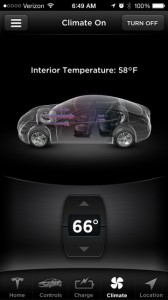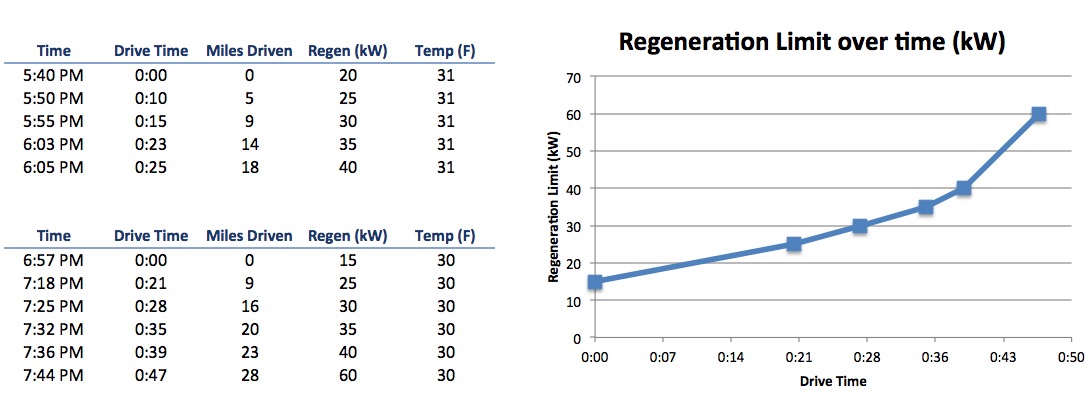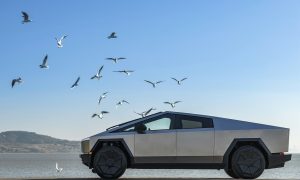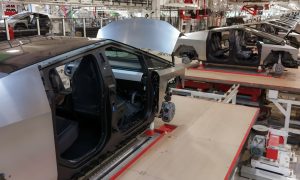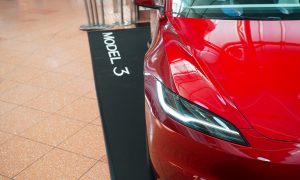Winter conditions has begun to set in here in New England with temperatures not exceeding the 20’s. Thankfully I’ve already prepared my winter wheels and tires in advance so I’m not overly worried about the potential for snow, however I’m quickly learning the effects of winter on the battery and overall energy efficiency.
Cabin Temperature
The first order of business is making sure I’m comfortable when I get into the car each day. This means preheating the Model S cabin temperature through the Tesla App (if I happen to remember to) or, better yet, have it scheduled to automatically preheat via the VisibleTesla app.
My daily schedule looks something like this: VisibleTesla preheats the car 30 minutes before I enter and while it’s still plugged in from my overnight charge. This ensures I enter a warm car every morning with no affect on my range – the best of both worlds!
Leaving for work at the end of the day, however, is a bit more erratic so I usually use the Tesla App to preheat on an ad-hoc basis. I realize that this preheating will eat into my overall battery range, but I’m not overly concerned because I have plenty of range to spare even with a 100 mile commute each day. It’s well worth it for a little more comfort.
I enjoy turning on the air conditioner during the summer months but getting into a warm car in the dead of winter is even better!
Limited Regenerative Braking
Prior to the winter, the only times I have experienced limited regenerative braking (regen) was directly after performing range charges in anticipations of my Tesla road trip adventures. The Tesla battery does not have the capacity to receive additional energy (when at a 100% state of charge) thus it disables regenerative braking all together.
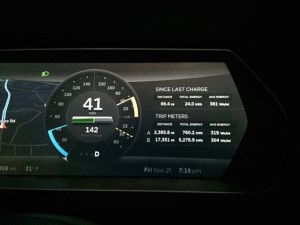 Winter months, however, bring a completely different experience with regen. When the Model S is cold it limits the ability to regen since the batteries need to be at an optimal temperature before it receives any additional charge.
Winter months, however, bring a completely different experience with regen. When the Model S is cold it limits the ability to regen since the batteries need to be at an optimal temperature before it receives any additional charge.
A dashed yellow line appears on the center display indicating that regenerative braking is limited. If you’ve been accustomed to driving with regen on, this new behaviour (with regen disabled) will feel and drive very differently.
I found myself quickly rolling towards the cars in front of me as I instinctively ignored the brakes and assumed that the car would just come to a gradual stop by letting go of the accelerator pedal. That obviously didn’t happen with regen limited. You’ll need to use your brakes so be careful not to “over press” it as you quickly adjust to driving with brakes again.
This winter-induced form of limited regeneration lasts for a very long. I wasn’t sure if the lack of regen was isolated to the weather conditions for that particular day so I decided to log my results over a larger sample of several days.
Here’s what I noticed about the effects of winter on Tesla’s regenerative braking:
- There appears to be a linear easing off of the “regen cap” through the first 30 minutes. At 0 miles, when the car is just started, the amount of regen is capped at 20 kW.
- 25 minutes into my drive, the regen cap is loosened to 40 kW.
As you can see from some of my data points, it took me over 45 minutes of driving (30 miles covered) before the regenerative braking behavior was back to normal — that’s almost my entire drive home!
I’ve been experimenting with various approaches to avoid the regen capping. One of which is timing my overnight charge so that it completes right at the time I’m about to leave for work. This ensures that the batteries are at a good temperature, by the time I begin driving, and with no regen cap in place. Timing it perfectly can be tricky.There’s been a few occasions where my charge completed earlier than expected and as a result the batteries cooled off before I got to drive.Here again VisibleTesla can help, but it’s an area that I wish Tesla would address directly —
add a feature to allow users to specify the END time for a charge as opposed to the start time. The Model S should calculate when charging begins based on the set end time.
I’ve been experimenting with ways to reduce the after-work limited regenerative braking occurrences but since there’s no charging infrastructure at my work, I can’t pre-warm the batteries. I’ve even tried warming up the cabin temperature in advance to see if this would have an impact on regenerative braking but unfortunately it doesn’t.
Higher Energy Use
Cold weather definitely affects energy use on the Model S. My tires, while great for winter, are less efficient — they’re not the low rolling resistance tires that came with the Model S. I’m also using extra energy for warming the cabin (despite my chilly 66 F year-round cabin temperature setting). The Model S is also using extra power when managing the battery temperature.
Prior to winter my average energy consumption was around 300-315 kWh/mi but now I’m averaging 350-365 kWh/mi or approximately 16% more energy used than summer months. I’m also using my brakes more during the winter, as a result of the limited regenerative braking, so that will also introduce more wear and tear.
One piece of advice from Tesla is to use seat heaters to warm yourself up over cabin heat. The seat heaters apply heat directly to your body and thus a more efficient use of energy. If you have your cabin temperature set at 72 F , try reducing it to 68 F and use your seat heaters to warm yourself up.
I’m sure I’ll be uncovering a lot more tips and interesting findings over the next few months especially as the snow storms start blowing in and temperatures dip into single digits! Stay tuned!


